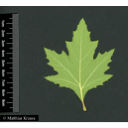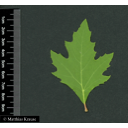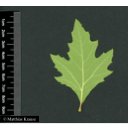Useful information about the taxon (species, subspecies, variety...)
Platanus orientalis L. 1753
Platanaceae
(APG IV)Oriental plane, Oriental plane tree, Old World sycamore
Akzessionnummer: LG-S-043-18779
Pflanzjahr: 2009
Patenschaftstext: Für Bebunio von Mami und Papi
Taxon concept: The Plant List (2014), version 1.1
Distribution: South East Europe to Western Asia
Platanus orientalis L. - Accepted: Platanus orientalis L. bei The Plant List (2014), version 1.1; Familie: Platanaceae (APG III)
- Flowers
- monoecious species; flowers in globose capitate inflorescences
- Flower ecology
- wind-pollinated (anemophilous)
- Life form
- tree
- Leaves
- leaves palmately 5-7 lobed; young leaves and shoots tomentose with stellate hair
- Foliage persistence
- deciduous
- Fruits
- fruit is an aggregate fruit of achenes (nutlets)
- Fruit ecology
- wind-dispersed (anemochorous) and water-dispersed (hydrochorous)
- Soil conditions
- preferentially on moist gravel soils that are near to groundwater level
- Natural occurrence (habitat)
- river banks, along streams, wetlands, valleys, mixed forests
- Vegetation typ and synecology (plant community)
- temperate, mixed mesophytic deciduous forests
- Constraints according temperature
- frost sensitive
- Constraints according radiation (light)
- intolerant of shade
- Constraints according habitat
- tolerant to air pollution
- Usage
- the wood is used for the production of furniture, barrels, cabinets, crates, panelling, and gun carriages as well as for paper production; also used as ornamental tree; the bark is used for medicinal purposes in Iran
Erhardt, W., Götz, E., Bödeker, N. & Seybold, S. (2008): Der große Zander. Enzyklopädie der Pflanzennamen. Band 2. Arten und Sorten. Eugen Ulmer KG, Stuttgart (Hohenheim), 18. Aufl., 2103 S.; Global Biodiversity Information Facilty (GBIF). Online Publication: www.gbif.org;
Diese Webseite verwendet Google Maps, um Karten und Standorte von Pflanzen in den Hohenheimer Gärten anzuzeigen. Dadurch werden unter Umständen Daten an Google weitergeleitet, was mit einer Verarbeitung Ihrer personenbezogenen Daten verbunden sein kann. Die Datenschutzerklärung von Google finden Sie hier: Datenschutzerklärung von Google




